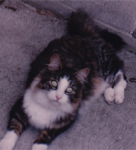johnrrr wrote:Hi,
This is a follow on from this thread -
viewtopic.php?f=1&t=110693&start=30
It was recommended that I try increasing my min pressure from 7, which I did (to 9) and to put my max at 20 on the basis it wouldn't go past what was needed.
It's been my personal experience that if my AutoBiPAP is running wide open, it will increase the pressure more than is necessary under certain circumstances. In looking at the data that lots and lots of people have posted here through the years I've been on the forum, I've seen lots of examples where an APAP running wide open increase the pressure more than is needed. It's not common, but it's also not exactly rare either.
And one problem with an APAP increasing the pressure too much is that when the pressure is too high, that can all by itself increase certain kinds of "unstable" breathing, which the machine misinterprets as sleep disordered breathing, which leads to more pressure, which leads to more unstable breathing, and so on and so forth.
As I said before, this doesn't commonly happen, but it does happen frequently enough where it's not exactly rare or unheard of.
I've done this for the last two nights and had huge leaks, and the pressure has ended up at 20 both nights. It's been very uncomfortable, woke me up several times, and led to a higher AHI than normal.
I would strongly suggest that you reduce the max pressure back down to where it was before this experiment. On the other thread you posted something that indicated your machine was either running in APAP 7-10cm or running in CPAP at 10cm. (There was some confusion about this).
I'd suggest that if you are wanting to dial-wing that you limit the max pressure to something like 10-12 cm at least at the start.
Any time I set my max higher, I always ended up hitting it, regardless of the number. But this massive leaking isn't normal.
At a lower level, the mask seems fine.
When you run an APAP with an exceptionally wide range (like 9-20), you fit the mask at the beginning of the night at low pressure. Once the pressure increases dramatically, it's not uncommon for the mask seal to spring some leaks. It's also not uncommon for the extra pressure to force it's way into the mouth and that can then encourage mouth breathing, which leads to large leaks.
Any idea why this is happening? Is the pressure causing the mask to leak, leading to more pressure - a runaway effect? The mask seems to fit ok otherwise.
Not quite.
Usually CPAPs are not programmed to increase the
pressure level[/v] in response to Large Leaks. But it will increase the air flow through the mask in an attempt to maintain the current pressure setting. (This can feel like it's increasing the pressure if you're awake when it happens.) In fact, some APAPs, like the PR S1 APAPs, are programmed to decrease the pressure level if a large leak lasts for a certain amount of time with the idea that the mask has a better chance of "resealing" itself at the lower pressure setting.
I'm not familiar enough with the Icon's Auto algorithm to understand why it would react to large leaks the way your data suggests. However, there are also good evidence that what's causing the pressure increases are events scored by your machine, as shown by the boxes I've added to your data:

In other words, what I think is happening is this:
Your machine is detecting events and raising the pressure in response to those events. And the increased pressure leads to leaks. Which leads to increased restlessness and possibly some so-called sleep-wake-junk (SWJ) periods where you are drifting in and out of sleep and the breathing is just plain not as stable as regular sleep breathing is. Which leads to the machine mis-interpreting the SWJ breathing as real sleep disordered breathing. Which leads to more pressure increases. Which leads to more leaks. And so on and so forth.
Is there anything in these (composite) screenshots that suggests what could be wrong?
Biggest oddity that I see in the data is that your Icon never lowers pressure after the clusters of events end and the breathing is presumably stabilized. Specifically, between 4:00 and 5:30, there's nothing going on in the Event table to indicate the breathing is still unstable. So why didn't the Icon start to lower the pressure back down toward the minimum pressure setting of 9cm? Both a Resmed APAP and a PR APAP would have reduced the pressure during that hour and a half without any events. So why didn't the Icon?
The only thing I've done differently in the last two nights is follow the advice to try sleeping propped up a bit more, so I've used two pillows instead of the normal one.
That could make the mask more unstable on your face.












